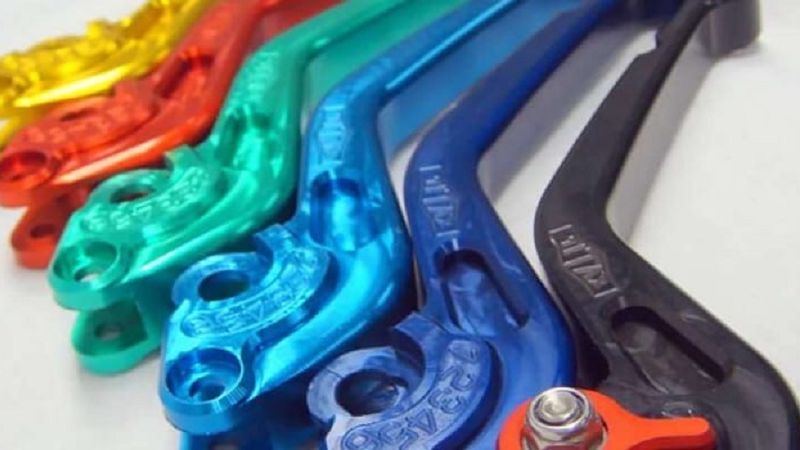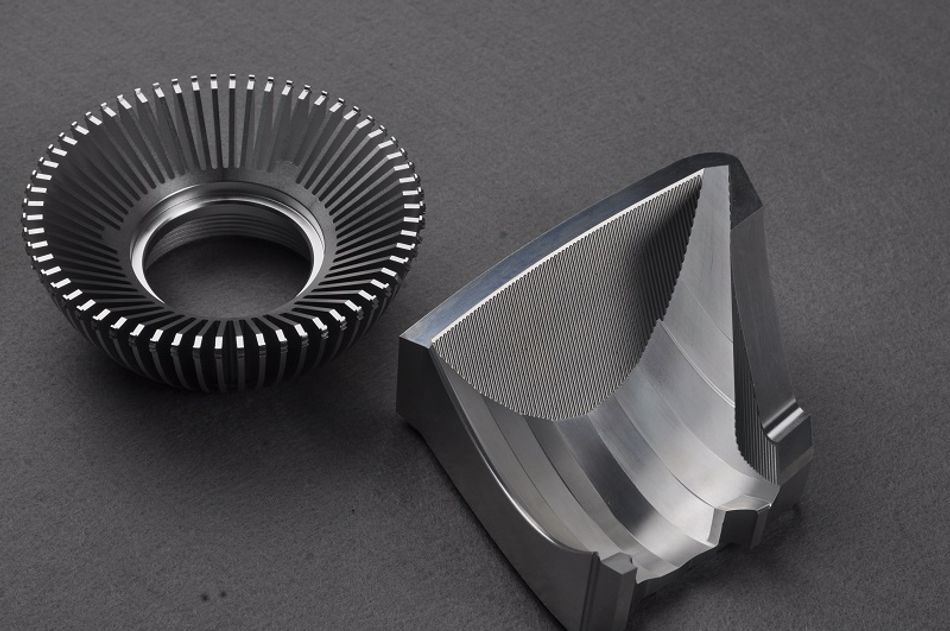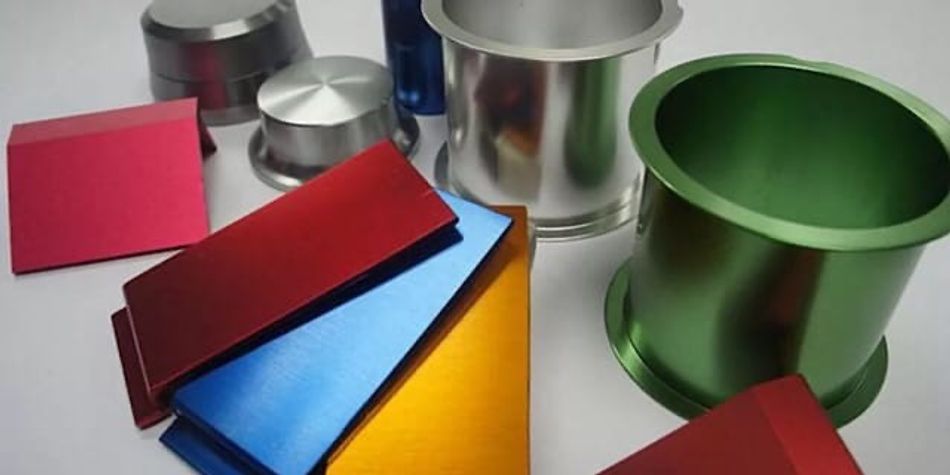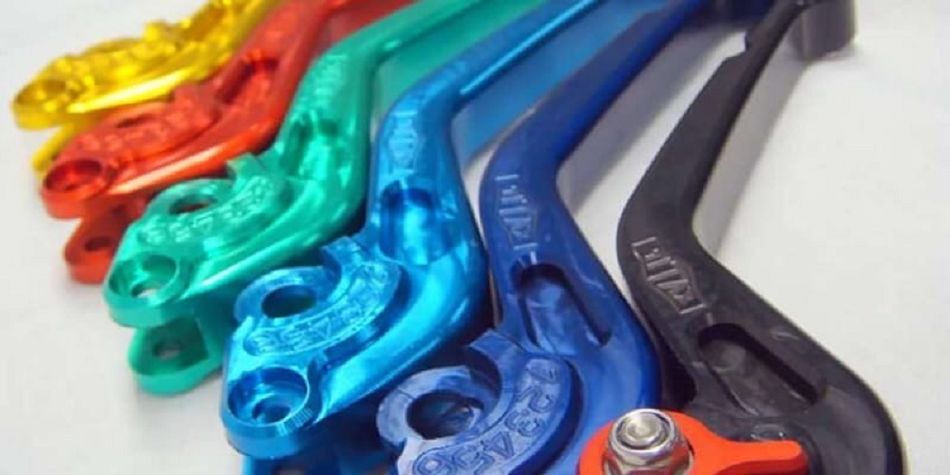Deoxidizing Aluminum as a Pretreatment
Deoxidizing is the process that is prepared for subsequent surface treatment. The use of deoxidizer deteriorates can remove the natural oxide layer formed on the surface of the aluminum

Deoxidizing Aluminum
Due to properties like strength, lightweight, and resistance to corrosion, aluminum alloys are being mostly used in the aerospace industry. To increase the life of the spacecraft, good quality surface treatment is required for the custom aluminum parts. Surface treatment of aluminum is imperative to improve the properties of the aluminum like hardness, resistance to wear & tear, and decorative properties i.e physical appearance. Cleaning, polishing, painting, plating, and heat treatment are some typical examples of surface treatment processes.

When aluminum comes in contact with the surrounding oxygen, it can create a very thin layer of aluminum oxides. This unwanted layer of oxides may affect the surface treatment process like anodizing or electroplating. This aluminum oxides layer must be removed before surface treatment processes for better surface properties. This removal of the layer is known as the de-oxidation of aluminum. During the de-oxidation process, aluminum oxides are removed from the surface to improve the efficiency of surface treatment processes. These oxides cannot be removed by ordinary mineral acids so they are removed by oxidation-reduction (redox) reactions by the use of nitric, sulfuric, or chromic acids based solutions.
Types of Deoxidizers
There are different possible ways to prepare a solution that will meet your requirement of preparing surfaces for treatment processes. This can be accomplished by preparing a solution of a strong acid and any other suitable chemical agent. The solutions based on nitric, sulfuric, or chromic acids are most commonly used for the deoxidation of aluminum. The nitric acid and sulfuric acid-based solutions are interchangeably used as deoxidizers. As nitric acid is most commonly used so in this article nitric acid-based solutions are discussed in detail.
Nitric acid can act as an autocatalytic and also slowly attack aluminum. Because of these abilities, nitric acid-based deoxidizers are most commonly used. The metals which are rich in magnesium cannot be treated efficiently with caustic etching or with other surface treatment processes. In those cases, the nitric acid-based solution is preferred because they are more effective deoxidizers in the case of magnesium. The oxidizers containing nitric acid produce the finishes of satin type. It does not remove the shine from the finished metal part and also helps in making the old parts serviceable by improving their surface finish. Nitric acid opens the pore structure which makes the anodizing process easier. After processes like painting, anodizing, or any other surface treatment, oxidizers based on nitric acid can be used. For example, the solution of 15-20% nitric acid, 60-70% ferric sulfate, and ammonium bifluoride can be used to remove the layer of aluminum oxide, before any surface treatment process. As these solutions are chromium-free, they are environment-friendly. Furthermore, no fume exhaust is required in this case. The 316 Stainless Steel or Polyvinylidene Fluoride (PVFD) liner is used to make the tanks for this type of deoxidation.

Due to the anti-corrosion properties of chromium, the solution based on chromic acids is also used as deoxidizers. These deoxidizers also remove the unwanted oxide layers from the surface before the subsequent surface treatment processes. They are good as corrosion resistant but not favorable for the environment due to their toxic nature. Chromic acid-based oxidizers are known for the removal of heat-treatment films. Tanks made from 18-8 stabilized stainless steel clad material, high-density propylene, or PVFD material are used in the case of chromium-based deoxidizers.
Another type of deoxidizer is a hydrofluoric acid-based deoxidizer. This type of deoxidizer is preferred for the parts that are prepared by a process like shot peening, blasting, or casting. Most of the deoxidizers that are chromium-free include fluoride. These solutions not only remove the oxide layers but also increase the etching rate. Over time, the aluminum forms the cluster with the fluoride and thus drops and un-stabilizes the etch rate. The etch rate is dependent on the content of fluoride and aluminum present.
All these acids are harmful to human operators so special care must be taken while dealing with these acid-based solutions.
Deoxidizer Applications

There are so many cases where aluminum surfaces can be prepared using deoxidizers before any surface treatment process. They are good for cleaning purposes with minor or no etching. They also help to remove oxide and corrosion products from the surfaces. To increase the area, oxidizers are also suitable for etching. They are useful in both light-duty and heavy-duty deoxidizing.
In aerospace industries, most of the parts are made of 2000/7000 series aluminum alloys that are alloyed with copper, zinc, magnesium. When these alloys are exposed to the environment, they react readily with the atmosphere. The oxide layer is formed on the surface which interferes with the subsequent surface treatment processes. Before the anodizing or surface treatment processes, with the use of deoxidizers, these oxide layers are removed and cleaned before any further process.
Deoxidizers are also useful in removing the welding fluxes and heat treatment scales which can interfere with the post-processing. There may be some cavities present after the welding process which can trap the solution and will be harmful to the parts. To remove these cavities and make the surface smoother, the solution of nitric acid and sulfuric acid is used. Heat treatment scales can cause rust issues and these heat-treated scales can be removed using hydrochloric acid.
The parts, prepared by processes like blasting, shot peening, or casting, are required to be cleaned by the deoxidizers that include fluoride. Normal casting etch is not suitable for this because in that circumstance the control of the metal removal process is another problem. The fluoride in deoxidizers is also recommended for a good finish and attractive surface appearance.
How to Maintain the Deoxidizer
The facility controls are imperative while electroplating a thin layer of corrosion-resistant metal on other metals. To maintain the deoxidizers, it should be ensured that tanks including the tack welds are made of acid-resistant material. To avoid over-etching, the temperature indication should be available for the operator. With the increase of 10 oF of temperature, the reaction rate is doubled. For uniform concentration and temperature, solution agitation is important. During the manufacturing, the operators must be wearing suitable gloves to reduce the risk of contamination of the parts. If the surface is in contact with the body parts for a long time, the body oils or sweat can also affect the surface. To prepare a better surface, the operator should be using a dry, clean, and powder-free glove. To control the quality of the solution, chemical solutions are required to be analyzed to ensure stability and etch rates. In case of harmful solutions, fume exhaust is required to be installed. The solution should be properly filled while the pretreatment process is performed so that part can be completely immersed in the tank.

Conclusion
The aluminum exposed to the environment reacts with the atmosphere and makes a layer of oxides on the surface which interferes in the surface treatment processes. Deoxidizing is the process in which a clean surface is prepared for subsequent surface treatment processes. The use of deoxidizer deteriorates and removes the natural oxide layer formed on the surface of the aluminum. This can be done with the use of different acid-based solutions like nitric acid, sulfuric acid, or chromic acid-based solutions. To maintain the deoxidizers, special care is required in facility control, manufacturing control, and quality control.